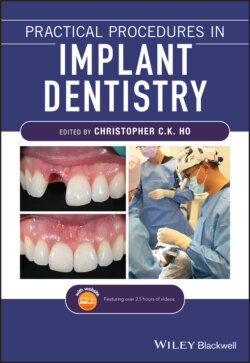Читать книгу Practical Procedures in Implant Dentistry - Группа авторов - Страница 44
5.1.2 Effects of Tooth Loss on the Individual Level
ОглавлениеThere is variability not only in the way which individuals heal from an extraction of a tooth, but also how the individual responds to the loss of the tooth from a functional, emotional, and quality of life perspective. While initial soft tissue healing occurs consistently during the first few weeks post‐extraction in almost all individuals, there is a greater variability in the period of time during which mineralised bone is formed in the socket [5]. Tooth loss in general can be the cause of functional or aesthetic impairment, creating difficulties in chewing efficiency, phonetics, or aesthetic challenges, depending upon the location and number of teeth lost (Figure 5.5). Notably there is strong evidence that the distribution and location of tooth loss has an impact on the oral health‐related quality of life. Oral health‐related quality of life scores tend to drop sharply when lacking a minimum number of occluding pairs of teeth (10 occluding pairs) or total remaining teeth (20 teeth) [1], consistent with the concept of a shortened dental arch [16]. Studies on the impact of tooth loss on an individual's quality of life consist of pooled data reported at the population level and thus may mask heterogeneous data at the individual level. There appears to be wide variation in the emotional response to tooth loss among individuals that cannot be linked closely to the distribution or number of teeth lost [17].
Figure 5.5 Loss of vertical dimension and facial soft tissue support. (a, b) Clinical image of patient's edentulous maxilla (a) and mandible (b). (c) Resulting effect on patient's facial profile, vertical dimension, and soft tissue support without prosthetic replacement of teeth.
